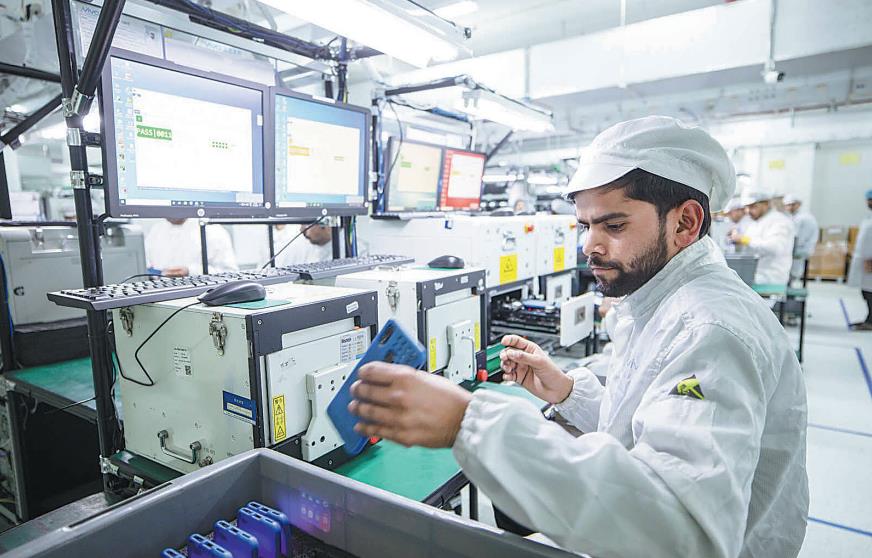5G in SE Asia will bring opportunity to Chinese telecom businesses


Southeast Asia is a developing 5G market, which is moving relatively slowly without strong demand, but the market is diversified, said news outlet Yicai, citing senior analyst Yang Guang at market research company Strategy Analytics.
Singapore will launch two standalone 5G networks next January, and will build a 5G network that can cover a half of the country by the end of 2022, as well as the entire country by the end of 2025, the country's Infocomm Media Development Authority announced on April 29.
Currently, the project has been bid on by an associated company formed by Singtel, StarHub and M1, other mobile network operators that will purchase the right to use the 5G network, the authority said.
To improve the situation of low network speed and high network delay, the Philippines' investment on networks has started to accelerate.
Last year on June 20, the Philippines' telecom giant Globe Telecom launched the country's first 5G commercial network service, and Huawei provided the core equipment. In January, Huawei completed its 5G testing in the Philippines.
In March, Advanced Info Service started to provide 5G service in Thailand, and advertises its service in Bangkok's main transport stations and streets.
Based on the strong logistics chain, cross-border e-commerce plays an important role during the COVID-19 pandemic that restricts people from going out the door to bring negative influence on businesses.
This year, the number of vendor and products sales in the top 3 e-commerce platforms in Southeast Asia will see a triple increase from last year, which will push up the demand to improve the digital infrastructure in the region, said Yicai, citing a Thai official.
Vietnam plans to develop its own 5G communication equipment. Currently, the country's largest telecom provider Viettel, business giant Vingroup and IT company FPT have announced their 5G research and production roadmaps.
However, 5G development in the region is still slow, Yicai said. The technology issue is a threshold to these countries.
Some countries, including China, are using the 3.5 frequency band to set the 5G network, but the frequency band is mainly used for satellite communications in Southeast Asian countries, and it is difficult to make room for 5G in a short time, Yang said.
3G remains the main mobile communication in Southeast Asia and Oceania excluding India, and the proportion of those using the technology was 44 percent in 2019, said Yicai, citing an industry insider.
Although India, Indonesia, the Philippines, Malaysia, Singapore, Thailand and Vietnam conducted 5G trials last year, the frequency spectrum allocation restriction will delay the schedule of large-scale 5G deployments in Southeast Asia and India.
China and European counties are the principal markets for Chinese mobile communication manufacturers.
According to Huawei, it obtained 91 5G commercial contracts, and shipped over 600,000 5G Massive MIMO Active Antenna Units, including 47 units in the EU, 27 units in Asia and 17 units in other regions, by February.
Moreover, Huawei has signed a MoU with Thailand operator TrueMove H on 5G use, and successfully tested the first 5G international video call between the two countries. The Philippines' two largest telecom suppliers, Globe Telecom and PLDT, also have singed cooperation agreements with Huawei using the Chinese company's equipment to build 5G networks.
The market share of Chinese manufacturers will be increasing in Southeast Asia irrespective of the current international political environment, Yang said. In addition, as an important 5G equipment provider, Samsung also will wrestle with Chinese equipment manufacturers in the region.
Last year, Mislatel, a consortium formed by China Telecom and Filipino businessman Dennis Uy, obtained the Philippines' telecoms license to become the third major telecommunications player in the country.
Chinese smartphone manufacturers are taking efforts in Southeast Asia, with their market shares rising as the domestic smartphone market is saturated, said Yicai, citing Wu Yiwen, an analyst at Strategy Analytics.
Wu said that although Samsung remains in the lead position in most Southeast Asian markets, its market share is eroded by Chinese manufacturers.
Unlike the Chinese market, smartphone development in the region is slower, which means the region has market potential driven by new smartphone users, and the current low smartphone price has room to increase, Wu said. These situations will be conductive to experienced Chinese manufacturers.
- China's 5G tech develops with strong momentum
- Firms step up digitalization to mitigate outbreak impact
- UK will pay price if it carries out decision to exclude Huawei: China Daily editorial
- Huawei: Simplified, converged 5G networks are important
- Rumor-mongering sabotages bilateral ties: China Daily editorial



































